Avdeevka has gotten a lot of press. But it is not a turning point. It's a big step – but still just a step in the long march. Ukraine is big! The world beyond that, bigger still. Biden’s war continues.
The Russians and Ukrainians continue fighting along the entire line of contact – in the south towards Ugledar, in the Zaporozhya region, in the northwest of Avdeevka, in the Northeast towards Kupiansk and Liman, in the Bakhmut area towards ChasovYar, in the Marinka area – it's a long list.
The Russians are making progress, one village at a time, including recently Lastochkino near Avdeevka.
But bear in mind that while Ukrainians are fighting for territory, the Russians are not. Their intention is to destroy the military capabilities the Ukrainian Armed Forces. My estimates of Ukrainian losses over the last two weeks is over 20,000 men – not to mention equipment.
That equipment includes at least three Patriot missile systems, between $ 3 and 4 billion. Add to that two rare and expensive M1150 Assault Breacher Vehicles mounted on Abram chassis. Say goodbye to $20 million dollars. Then add assorted NASAMS systems (a bargain at $300 million each), AFVs and the like. Soon the US government will be asking you to buy it a coffee! Don't.
The Maginot Grid
In an earlier article or two, I wrote about what I called the "Maginot Grid" in which I said that, instead of creating a line of defenses in occupied Russian Ukraine from 2014 onwards, the Ukrainians had created a grid of fortified villages and towns connected by roads and railways, taking advantage of natural terrain, available urban structures, and tunnels, underground bunkers and the like leftover from the Soviet era—such as the Coke plant in Avdeevka.
This grid had several functions.
The first, of course, was to threaten Russia itself while protecting ‘Ukrainian” Ukraine west of the Dniepr, south to Krivoy Rog and further south to Odessa. Take a look at the map. Forces from the Grid could be quickly drawn up to mount offensives.
Keeping in mind that the overthrow of Ukraine's democratically elected government in 2014 was the brainchild of the CIA, the strategy reflected primary CIA objectives, including setting up bases close to the Russian border in occupied Russian Ukraine --something admitted only recently – but known to many of us for quite a long time. All part of the American plan to destroy Russia.
The Banderites were happy with all that—but the Maginot Grid had another purpose which was to keep the locals in line since Russian Ukrainians weren't too happy about being denied their language, culture, and freedoms. They were an occupied people in the same way that the French were in German occupied France during World War II.
Still another purpose, of course, was to provide a last-ditch defensive military buffer between occupied Donbas and Lugansk and Banderite-controlled Ukraine to the north, should the Russians gain the upper hand — keeping in mind that the Banderite "homeland" is Galicia on the Polish border, historically part of Poland and much of what is called “Western Ukraine”, including Kiev is Russian-speaking and historically Russian.
This last is where we are now.
The Maginot Grid in practice
The idea of a defensive grid is that if you are attacked in one fortified town, you can move reserves quickly from another nearby. If you lose one, you just move to another nearby. Wack-a-Mole. Of course, the weakness is a wider dispersal of forces and the complexity of logistics and supply.
The gird worked very well when the only resistance were the militias in not yet completely occupied Donbas and Lugansk in 2014 and 2015.
As NATO was hard at work building Europe’s biggest and best equipped army in Ukraine, taking advantage of the breathing space provided by the Minsk Agreements, the Banderites figured that at some point they could just roll over the resistance in the remainder of southern Ukraine, do a bit of genocide and ethnic cleansing, and take Crimea – and, when and if the Russians counterattacked after this “final solution”, they would be ready.
A lot of Ukrainian general staff had been trained by the Russians during Soviet times and thought they knew what to expect.
But from 2014 on, the Russians were modernizing their armed forces using Syria to test them and while, overall, their military was still configured for peacetime operations and inherited much from Soviet times, it was evolving into a different beast.
Evolution = adaptation.
War is not so much about planning as it is about adaptability – a point that Putin often makes. And in which the greatest military strategist of recent times, John Boyd made over and over again.
He who adapts fastest, wins. As Putin also indicates, adaptation also determines strategic paradigms which must evolve-- even though strategic goals may remain constant.
Given the complexity of the situation, the Russian military had a lot of adapting to do. They still do—learning from mistakes.
But, in the first month of the SMO, the Russians put paid to Ukrainian assumptions— striking at Kiev in a lightning move—first taking Hostomel Airport for two days with paratroopers, who fought until reinforcements arrived, then retreating in good order. as armored columns arrived along the highways.
Despite what NATO assumed then (and still do)—the Russians had no intention to try and take Kiev— which would have required a force three or four times as large as they had. As it was, they suffered a lot of casualties, but a full-scale assault would have cost them a lot more.
The Siege of Kiev tied up Ukrainian forces in the north, allowing the Russians, the DPR and LPR to make headway in the south. It was what Boyd would’ve called “disruption”.
The result was the victory in Mariupol. In addition, the Russians had immediately demonstrated they had not only the will but the way. Not that NATO paid any attention.
Throughout this war, Western military experts have assumed the Russians would do things the way they would do them. The Russians are not that stupid.
The US suffers from not having been involved in a peer level conflict since World War II. No – Korea and Vietnam and Iraq were not “peer level” wars.
In fact, the US has never been involved in a real existential war. And therefore much of what Is taught West Point is theoretical, based on convenient political extrapolations and myths of superiority. Groupthink.
Groupthink=stupid.
On the other hand, the Great Patriotic War was a life-or-death war for Russia and their military doctrine is based on hard experience. They understand the real war is with NATO and the Anglo-American Empire – and the conflict with Ukraine is a sideshow.
The Russians see the civilian population of Kiev as victims rather than enemies – so to win they need to do more than conquer territory and blow-up things – they have to conquer hearts and minds.
In the practical art of war, the best thing of all is to take the enemy's country whole and intact; to shatter and destroy it is not so good. Sun Tzu
Russian pragmatism
The Russians are pragmatic.
In 2022, they knew that the real targets of NATO were Crimea in the south and beyond that, Odessa, they so focused on taking Mariupol, the gateway city for the region and the surrounding area, to prevent the Ukrainians from attacking Crimea and reinforcing Odessa.
After that, most of the Maginot grid remained. Places like Avdeevka and Bakhmut.
Be that as it may, strategically speaking, the war was won in the first six weeks.
But the failure of negotiations in Istanbul confirmed what I expect the Russians already knew – that the proxy war was undertaken by a proxy government, a gang run by the Western Mafia. There is no possibility of compromise.
The thug with the knife is not the problem— it is his bosses. Sometimes you can talk him down—usually not.
And knives can do a lot of damage no matter what your level of martial arts skill.
The Russians realized there could be no quick end into this conflict. The withdrawal of forces from Kiev tested this assumption on the one hand, while, on the other, offered a convenient withdrawal of Russian forces which were needed elsewhere. Sun Tzu never recommended sieges longer than three months. It was time to end the Siege of Kiev anyway.
After Istanbul, the Russians had to adapt again. It was going to be a long war —but American-style “shock and awe” tactics were out of the question: they would have destroyed a country most of which was actually Russian. For the Russians there could be no Fallujahs.
A Moral War
Putin has made a point of trying to prevent civilian casualties in contrast to the Banderites who regularly shell shopping malls and hospitals and schools.
Similarly, Russians treat their POWs well— while Ukrainians abuse them. As the Russians liberate towns and villages in what used to be occupied Ukraine, they rebuild them with new schools and hospitals and apartment buildings—the infrastructure that Western Ukraine lacks. It also teaches Ukrainian alongside Russian in the schools.
The difference between the Russians’ civilized attitudes and the psychopathic goals of the Banderites will be eventually recognized—but the Ukrainians have been brainwashed for a decade –many from childhood – so it will take time.
In this respect of Russia's gradualist approach, attritting the UAF is the best one, giving time to rebuild destroyed towns— not to mention—improve the quality of life not only in Russian Ukraine but in Russia. Sometimes what is in the background is as important as what is in the foreground.
Russia subway (Moscow)
While Russia attrits the UAF in this way, it also attrits the Anglo-American Empire (AAE) and its European satraps economically and industrially. These people do not have hearts or brains. They have only wallets.
Denazification
Denazification is not just a matter of tribunals and throwing bad guys in prison; it requires massive revision of beliefs inculcated over many years, which means not only economic and social incentives but moral ones as well.
As the great strategist John Boyd always argued, one cannot ignore the moral dimension in war.
American-Ukrainian-CIA terrorism unifies the Russian people not only in terms of military objectives but also social ones, improved infrastructure in all, as mentioned, a better quality of life – things that American governments promise but never carry through on.
Europe is deindustrializing and in recession. The chance of a major economic collapse will gut Western economies. The West has no future. Just the 3 “H’s”.
Helplessness. Homeless. Hopelessness.
Goals
In the end, Russia has something to offer to what up until now has been called "Ukraine"—peace and prosperity. Russia is growing twice as fast as the US.
Russia's primary goal must be to restore the pre-2014 borders of Russian Ukraine—as part of Russia. That would include Odessa and the Kharkov region.
It’s secondary goal, after that, is to include the rest of the Ukraine in the Russian family of republics, either as part of the Federation or as part of the Russian union like Belarus. Kiev will be a Russian hub city once again. After all, it has a pretty nice Soviet built subway, which just needs a little renovation.
As time goes on, more and more Ukrainians from these regions will shake hands with the Russians. It will be a kind of conversion experience—and it is already happening.
One can always hope.
One can also hope that the West can be de-nazified, too.
Coffee, coffee, coffee…..
I have to apologize to my coffee buyers.
I reply with a personal message to each person who buys me a coffee. And I am still working through the list. A lot of people write me comments – which I really appreciate and often reply to at length. At the same time, I've been working on a special article—which is taking me some time because of the research involved. I should finish my special article this week.
This article I'm posting today also took me some time since events have been moving very fast. Political events in the US – especially the specter of the upcoming Trump presidency – have had their effect, not that Trump and power will change anything I think.
If you liked the article and wish to support my efforts. please buy me a coffee. Click here to do that —or on the photo below.
Attack Cats
🐈 A tactical cat is good and important, when there are tactical cats in the location, then with a high degree of probability there are no tactical mice and other reptiles, which saves tactical wires and tactical food supplies from completely non-tactical interference.
They are also soft, fluffy and purr funny. (Slavangrad)
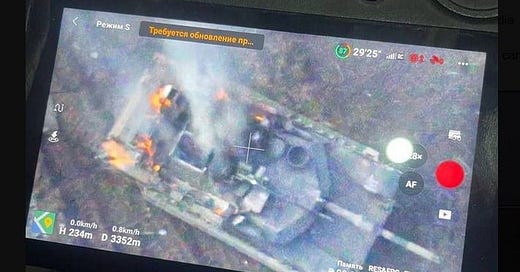


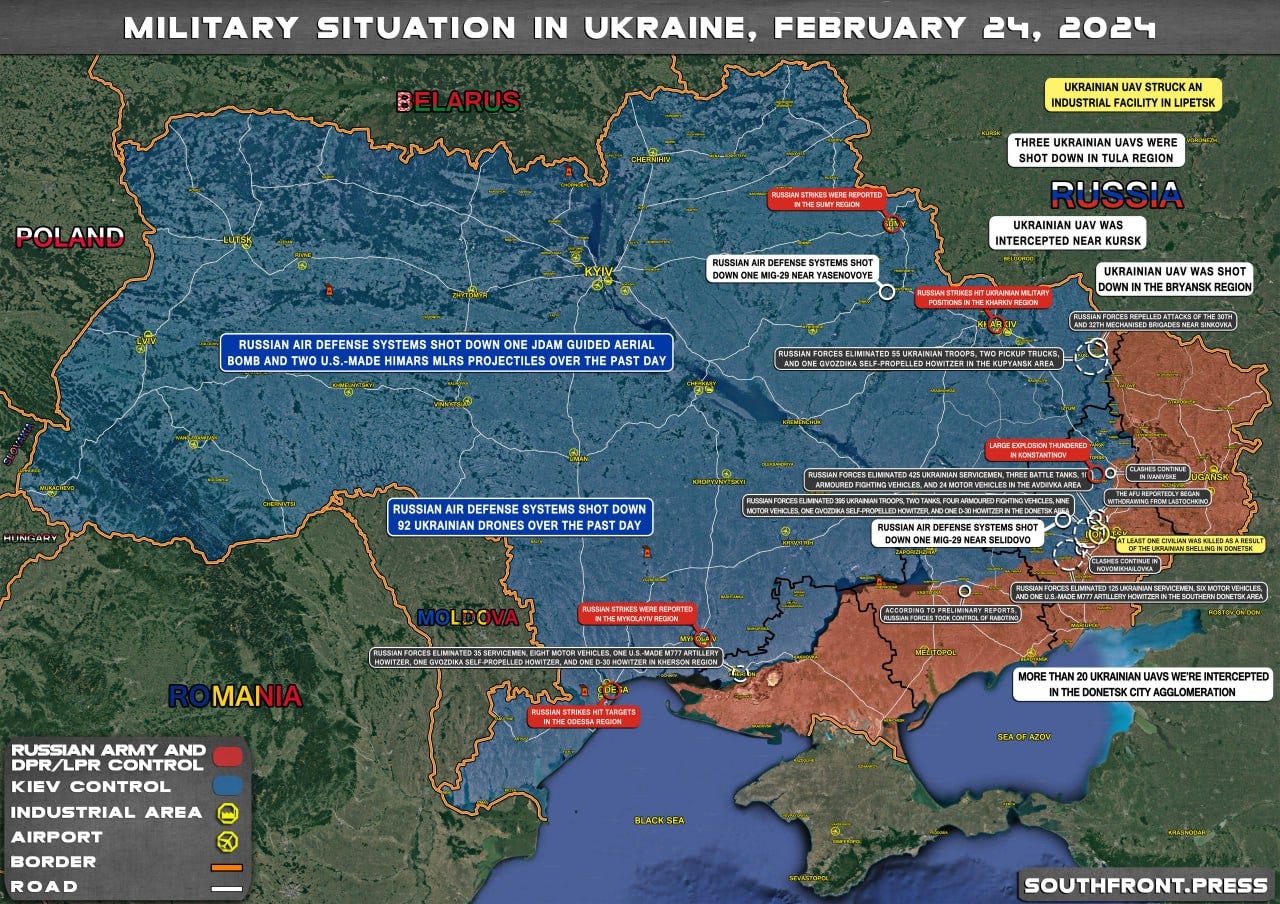
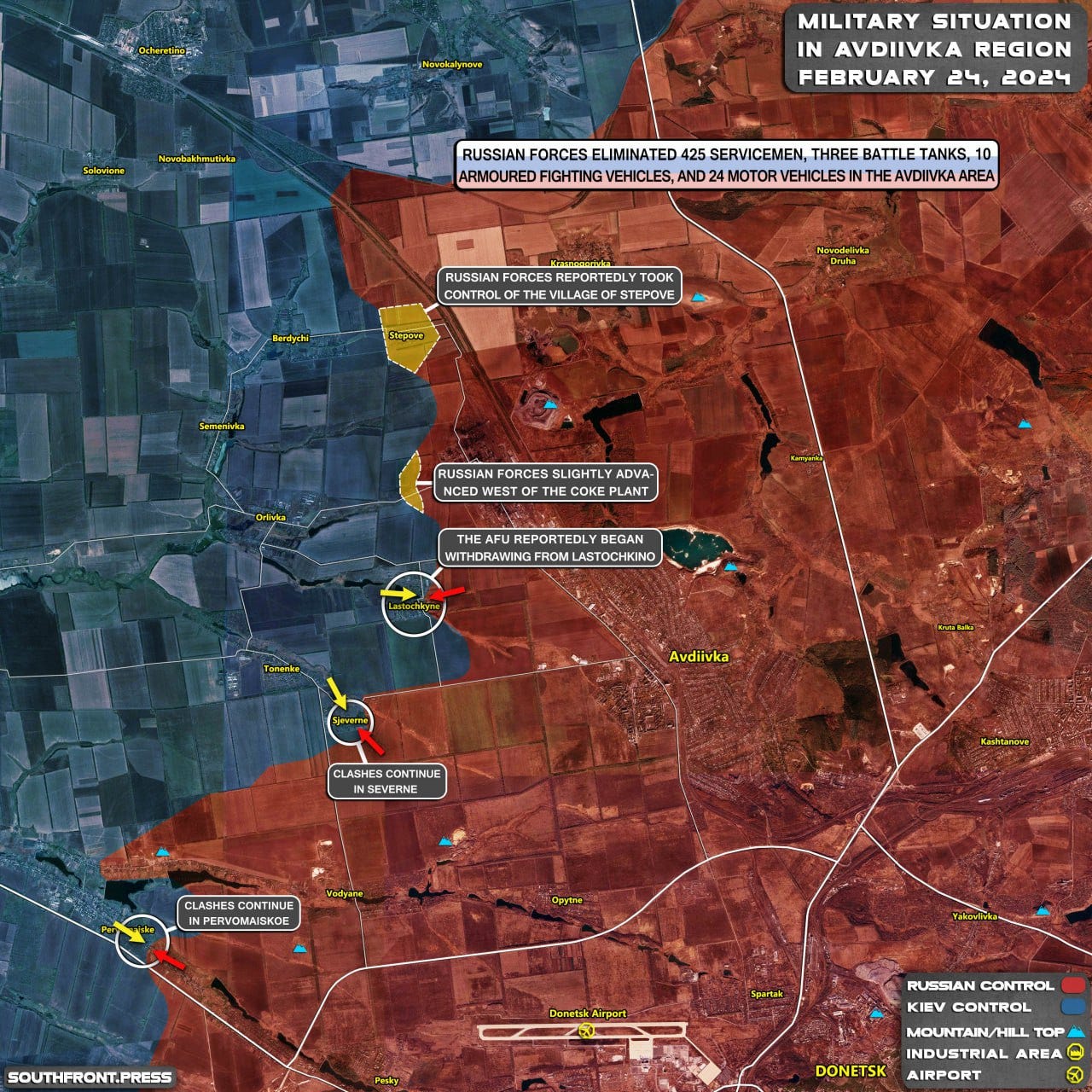

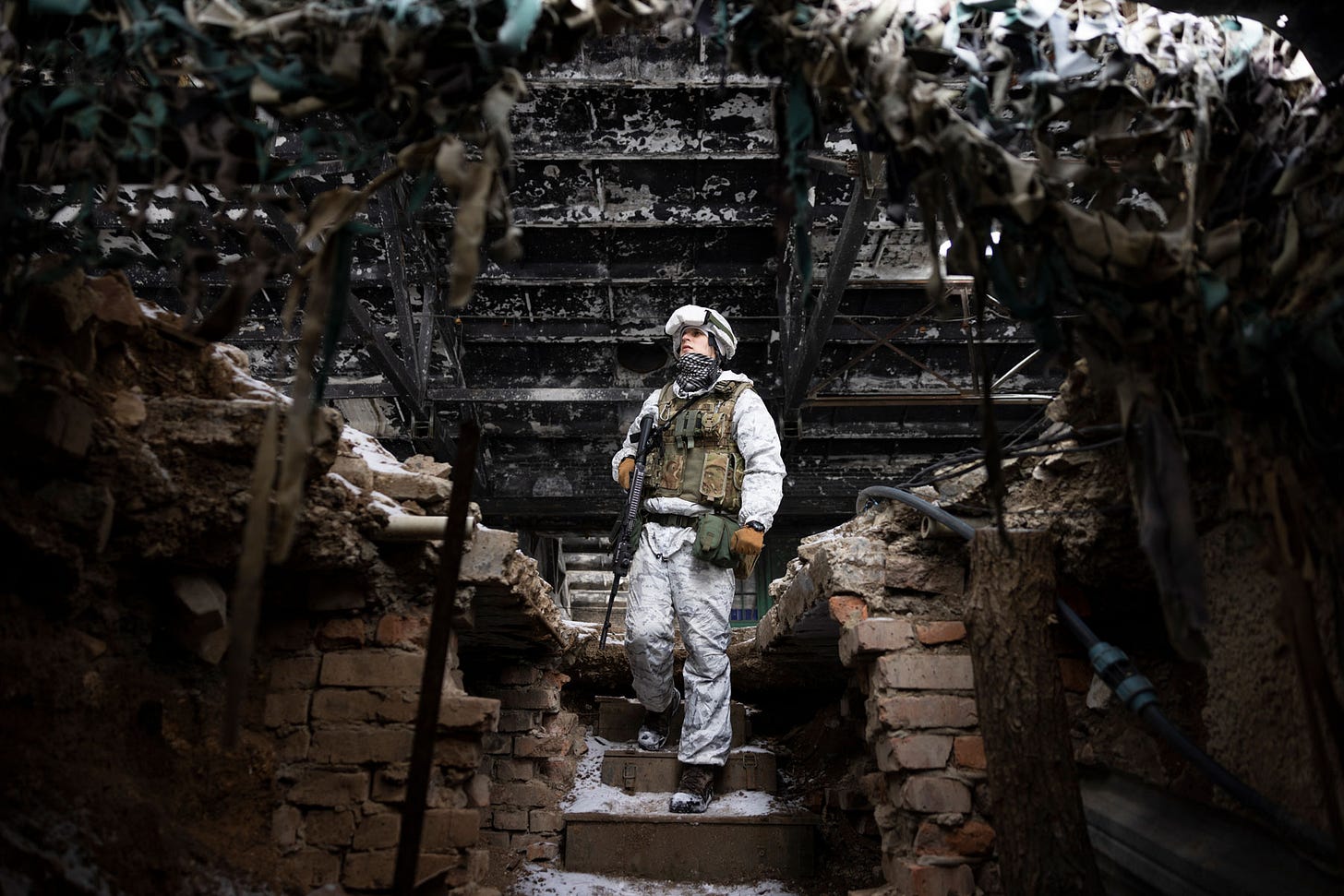
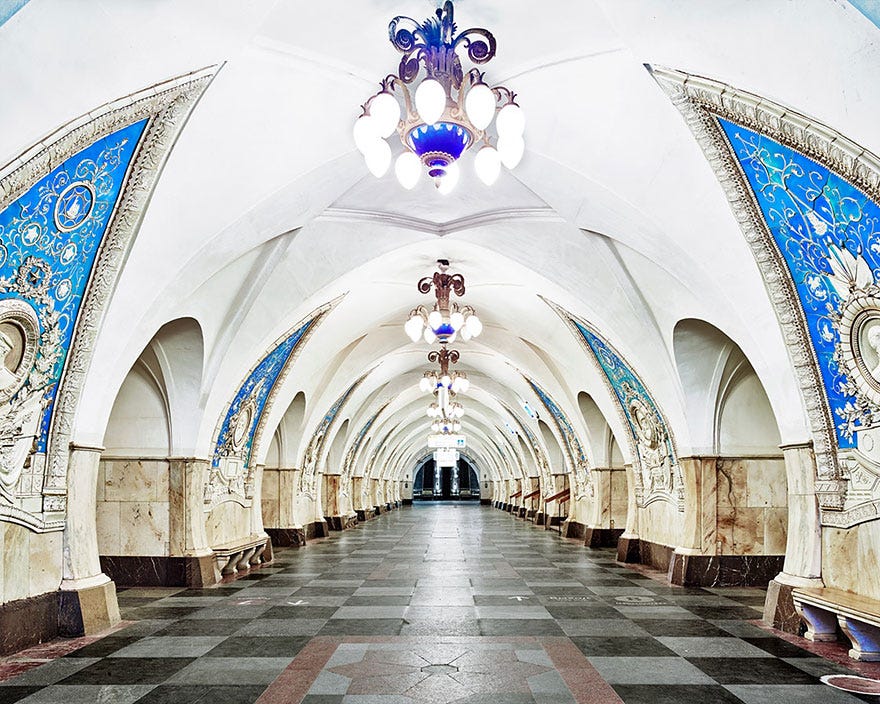


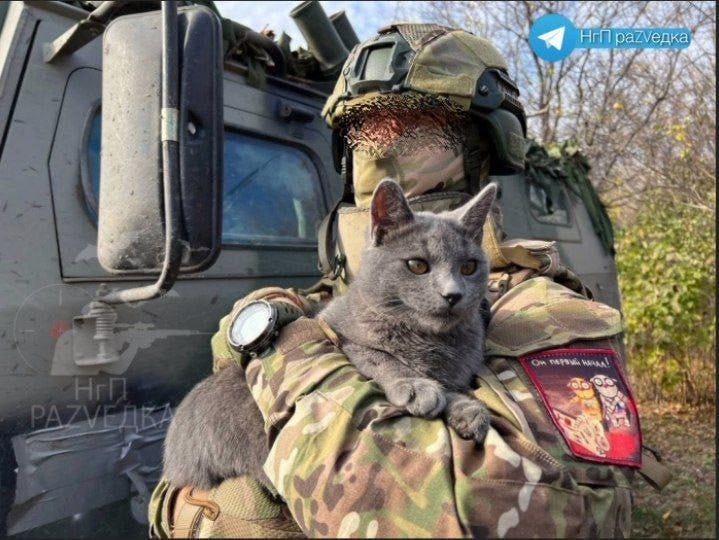
The video at the end of the article, showing Russian and Ukrainian soldiers shaking hands, is very powerful and sends a strong message of hope and peace!
Whether Korea, Vietnam, or Iraq were peer level military opponents or not, the U.S. flat out lost in Vietnam, but hey, so too France and China, Korea was a strategic loss and Iraq was an unmitigated disaster. And don't forget Afghanistan!
What the U.S. excels at are airborne terror attacks on defenseless populations, or head on battle against forces trained and equipped by our military with inferior weapons on terrain favorable to our hardware with total air supremacy.
It is time for the U.S. to have a reckoning about the supposed glory days of WWII. We have not come to terms with the heavy lifting provided by the Soviet Union in both theaters of battle.
And it cannot be said enough: the memories of full on war taking place where you live provide a realistic perspective on the use of military force. The U.S. lacks that experience, so far ...